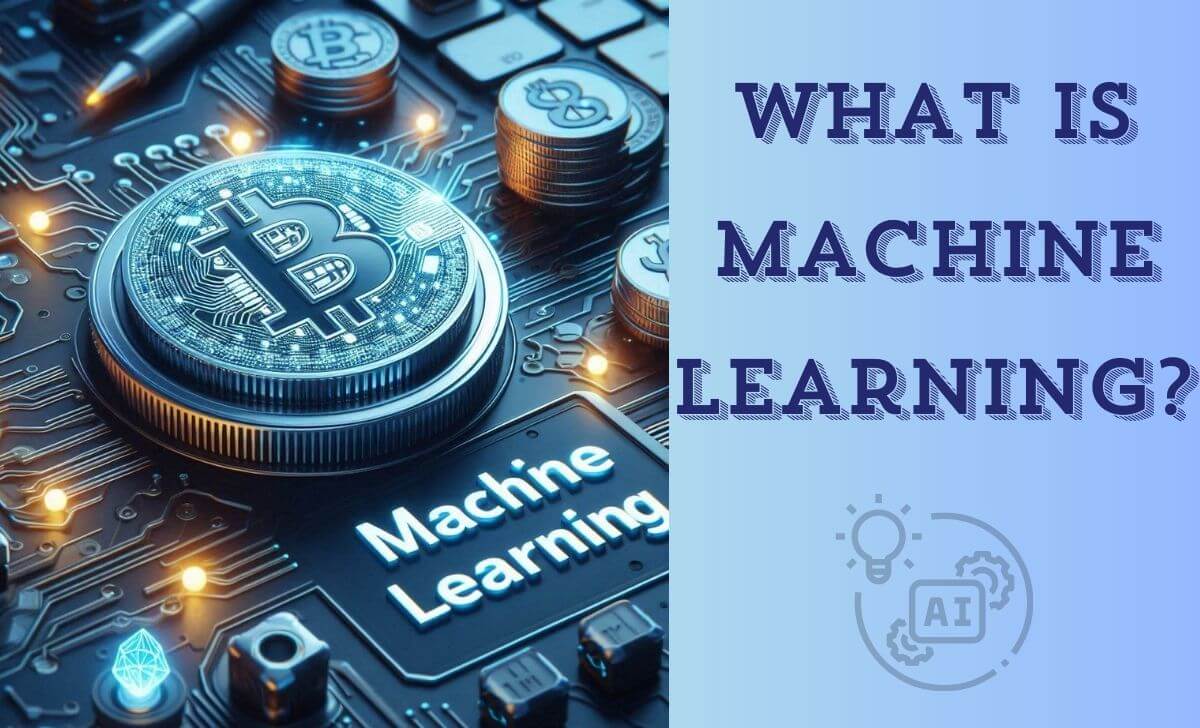Machine Learning is a branch of AI that allows machines to learn from data without being explicitly programmed. In the cryptocurrency sector, Machine Learning is becoming increasingly popular and is used in many applications.
This article by AZcoin will delve into the concept of Machine Learning, how it works in Crypto, as well as its applications and huge potential in the cryptocurrency market.
What is Machine Learning?

Machine Learning (ML) is a subset of Artificial Intelligence (AI) that enables computers to learn from data without explicit programming. Instead of programming each specific step, ML uses algorithms that allow machines to automatically detect patterns, identify underlying rules in the data and then make predictions or decisions based on what they have learned.
In the cryptocurrency market, Machine Learning can help investors and cryptocurrency companies gain a better understanding of market trends and behaviors, leading to smarter investment decisions. Additionally, ML can help optimize processes and minimize risks in cryptocurrency trading activities.
How Machine Learning works

Machine Learning is applied in the crypto space by using algorithms to analyze and process vast amounts of data, including historical prices, trading volumes, market sentiment, blockchain activities, technical data and many other factors. Based on this data, ML algorithms can:
- Predict prices: Build models to predict prices based on historical factors, market behavior and related information.
- Detect fraud: Use classification models to identify fraudulent activities in cryptocurrency transactions.
- Manage portfolios: Identify potential investment opportunities and make intelligent decisions on buying, selling or hold assets in a portfolio.
- Analyze sentiment: Monitor and evaluate market sentiments to make more accurate predictions about price trends.
Role of Machine Learning in the cryptocurrency market

Machine Learning plays a crucial role in developing the cryptocurrency market as it helps investors and cryptocurrency companies analyze and better understand the market. This enables investors to make smarter investment decisions and assists cryptocurrency companies in optimizing trading activities and managing risks.
Furthermore, Machine Learning algorithms can be applied not only to traditional cryptocurrencies like Bitcoin or Ethereum but also to new types of cryptocurrencies such as DeFi and NFT.
Common types of Machine Learning

There are three main types of Machine Learning: Supervised learning, Unsupervised learning and Semi-supervised learning.
Supervised Learning
Supervised Learning is a learning process where the algorithm is provided with labeled training data and makes predictions for new data. This helps the algorithm understand the relationship between factors and predict outcomes for new data.
In crypto, Supervised Learning can be used to predict the price of cryptocurrency based on historical factors like price and trading volume. The most common Supervised Learning algorithms are Linear Regression, Decision Tree and Random Forest.
Unsupervised Learning
Unsupervised Learning is a learning process where the algorithm is not provided with labeled data but instead automatically detects patterns and structures in the data. This helps the algorithm discover new insights and make conclusions without human intervention.
In crypto, Unsupervised Learning can be used to detect patterns and trends in the cryptocurrency market, helping investors make smarter investment decisions. The most common Unsupervised Learning algorithms are K-Means Clustering and Principal Component Analysis.
Semi-supervised Learning
Semi-supervised learning combines both types of learning by using both labeled and unlabeled data. The algorithms learn from the labeled data and apply what they have learned to the unlabeled data.
In crypto, Semi-supervised learning can be used to classify valid and fraudulent cryptocurrency transactions, helping to prevent illegal activities and protect investors, especially when evaluating the best crypto exchange for 2024. The most common Semi-supervised Learning algorithms are Self-training and Generative Adversarial Networks.
Advantages and disadvantages of Machine Learning
Advantages
- Automation: ML helps automate processes and analyze large datasets that are difficult for humans to handle, increasing work efficiency and reducing processing time.
- Accurate predictions: ML can predict trends and outcomes based on past data, aiding in making smarter decisions in fields like finance, healthcare, marketing and more.
- Fraud detection: ML can analyze and identify fraudulent patterns in financial transactions, helping to prevent illegal activities and protect consumers.
- Optimization: ML can find and apply optimization strategies in various fields, from portfolio management to supply chain optimization.
- Self-Learning capability: ML can improve its performance over time by learning from new data without needing to be reprogrammed.
Disadvantages
- Requires big data: ML needs a large amount of quality data for training, which can be expensive and difficult to collect.
- Training time: Training ML models can take a lot of time and resources
- High Costs: Developing and deploying ML models can be expensive in terms of hardware, software and skilled personnel.
- Lack of human-like reasoning: ML can only learn from data and lacks human-like reasoning capabilities. This can lead to inappropriate decisions when faced with situations it has not encountered before.
- Potential for error: If input data is inaccurate or incomplete, ML models may give misleading results.
Applications of Machine Learning in crypto

Machine Learning can be applied in various areas of the cryptocurrency market, including:
- Technical analysis: Using ML models to analyze and predict price trends of cryptocurrencies.
- Portfolio management: Identifying potential investment opportunities and making intelligent decisions on buying, selling or holding assets in a portfolio.
- Fraud detection: Using classification models to identify fraudulent activities in cryptocurrency transactions.
- Optimizing trading activities: Applying ML to find patterns in data to optimize trades and minimize risks.
- Market sentiment analysis: Monitoring and evaluating market sentiment to make more accurate predictions about price trends.
Conclusion
Hopefully, the information that AZcoin shared above has helped you better understand Machine Learning. Always update your knowledge and ensure compliance with privacy policy when applying this technology!

I’m Jessi Lee, currently living in Singapore. I am currently working as a trader for AZCoin company, with 5 years of experience in the cryptocurrency market, I hope to bring you useful information and knowledge about virtual currency investment.
Email: [email protected]











